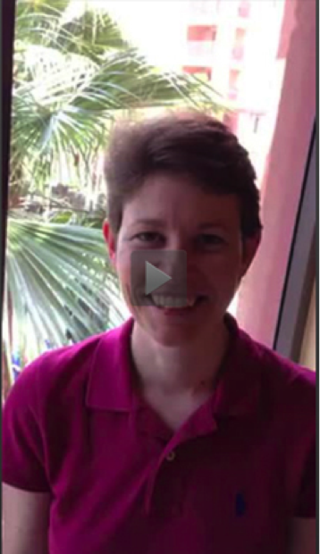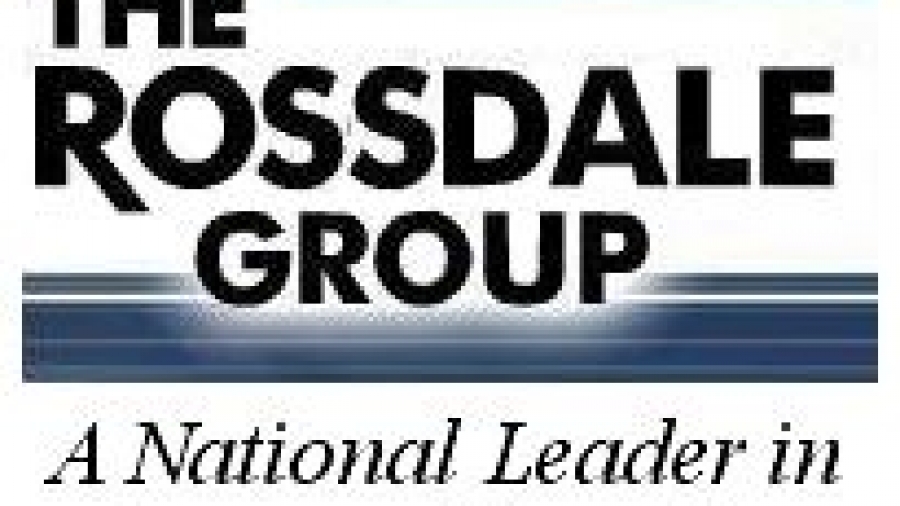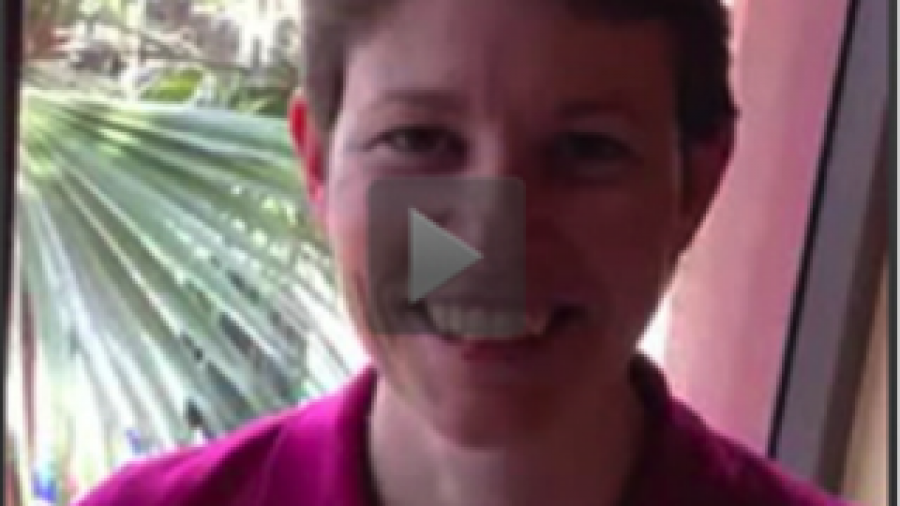The costs of healthcare & long-term care have dramatically increased in recent years. Yet, only a small minority of clients has adequate insurance and funding for this required assistance. At the same time, the spend-down of assets to qualify for government & elder benefits has changed over the years and become more complex. For most of the population, public benefits, including Medicaid & other government benefits, provide the principal funding of care. This has caused an unprecedented need for counsel fluent in asset planning & protection techniques to assist clients needing to qualify for government assistance. The faculty for this program features a national authority in the subject, who will cover tools for spend-down’s, exempt vs. non-exempt assets, differences between singles and married couples, the effect of future medical expenses on government benefits, and the landscape of Medicaid & medical expense planning. Lawyers With Purpose Founder co-presents “Mastering Medicaid Spend-downs, Government & Elder Benefits CLE” on March 11, 2020.
Introducing June 2019 Member of the Month, Jenny Rivard
Located in Manchester, New Hampshire and serving all of New Hampshire and Massachusetts, American Wealth Protection has been an LWP member since the fall of 2017. Owner and Founder Jenny Rivard began her legal career at just 14 years old when she worked typing documents and answering phones for the estate planning law firm where her mother worked. After several years at that firm, she knew that she wanted to become an estate planning and elder law attorney. She avidly pursued her career, obtaining her undergraduate degree in just 3 years, and in 2009, became the second youngest person to have passed the bar in the state of New Hampshire. After a brief stint at another firm, she created her own a year later, and went on to innovate by being the only firm in her market to include financial planning among her firm’s offerings, providing seamless service to her clients. Today, Jenny and her husband, Patrick, who is also an attorney and plays a key business development role at AWP, are focused not only on growing their business but also parenting their four beautiful children.
LWP sat down with Jenny Rivard to talk about her firm and the changes it’s experienced since becoming a member.
What brought you to LWP?
About six years ago, I had a client who came to see me because she needed a plan. She had Alzheimers and could no longer do math, but prior to this, she had been a physicist! We prepared all the standard documents, but she needed more. “Who will help with the day-to-day things, like bathing? What checkbook should my son use when he needs to take over the finances?” were among her many concerns. I realized that despite having a lot of tools, in order to provide a real plan, I needed more. I decided to get involved with Medicaid planning, and when I searched online for training, I found LWP.
I knew I needed the Medicaid software, so I attended Practice With Purpose, and I joined LWP right then. I’ve been a platinum member for two years.
How tightly do you follow LWP’s systems and processes?
My firm definitely speaks the LWP language, but we’re a unique firm, so despite my strong inclination to want to follow the systems as strictly as possible and not change the workflows, I realized that my firm simply didn’t fit perfectly in the category. We wanted one system that could handle all of the services we offer, including financial planning and insurance, while keeping all the notes for every file together. There are confidentiality issues that get quite complex with that, so, we’ve had to adapt LWP’s systems to fit.
What is the greatest success you’ve had since you fully engaged with LWP?
We’re on the brink of doubling our revenue within about a year to 18 months, but even so, I’d say that the biggest success was being able to see the 10,000-foot view so we could see what was to come next. Before LWP, I’d done pretty well on my own, but I was working in the business. Since joining LWP, we’ve gone from being a one-person to a five-person firm. That was due to the coaching—the ability to get to the next steps that I couldn’t have achieved on my own. Hands down, for me, the most valuable part of LWP has been the coaching with Mandy and Candace. They help us stay focused and spent a good deal of time helping us tweak the software to fit our model.
To what, specifically, do you attribute your revenue growth?
It’s the coaching…more so than anything else. I was too “in it” to see the 10,000-foot view of what was to come next. My LWP coaches got me out of that. I don’t think I would’ve gotten to this place without that coaching.
What do you believe sets American Wealth Protection apart from your competition?
Our unique model sets us apart. It’s the fact that we have the financial advisors on staff, and we do both legal and financial seminars. While we do have clients that have their own advisors, often times, they’re in separate buildings and not always on the same page in regard to the client’s needs. Our model offers a more integrated approach. Also, our approach to financial planning is to plan for the worst-case scenario. We assume the highest inflation and taxes, and from that, we figure out how long our clients’ income will last. Once that scenario has been created, we see what’s left to protect, which takes us into estate planning. I think our model is pretty unique right now, but people will probably migrate to it over time. A lot of attorneys think they need to bring someone in house, but in my case, I had both the legal and the financial planning licenses.
What is your marketing model?
I have over 2,000 clients I’ve gathered in the last 9 years, so we get a lot of client referrals. Other than that, there are a few referrals from other places, and of course, we do the workshops. We would like to start more traditional advertising, but we’re not doing it yet. For now, we’re continuing to work on our infrastructure.
Do you attend LWP’s TAPER events, and if so, what wowed you there?
We attend one TAPER per year, and the IMQ (In Marriage QDRO®) presentation was amazing. But, our firm’s TAPER “aha” moment is really just that it keeps us centered and moving in the same direction, and we really need that by October of each year.
What is your favorite LWP tool? It’s a tie between the dashboard and the Medicaid software. The dashboard is an easy way to see what happened all month—what we should have earned vs. what we actually collected.
What kinds of changes, if any, are you currently seeing in your market?
In our market, we’re seeing a trend among widows whose husbands had handled the finances. They’ve suddenly found themselves in a situation in which they don’t know who to call. There’s an unmet need there.
FUN FACTS:
Share something about yourself that most people don’t know about you.
I’m a “little old lady at heart.” I really enjoy crossword puzzles and jigsaw puzzles. I grew up on a farm, so now I can my own vegetables, and I love all kinds of outdoor activities, like fishing.
What is your favorite book, and how did it impact your life?
I love to read. The book that taught me how to adapt my personality to that of the person with whom I’m speaking so we’re connected was Jeffrey Fox’s Rainmaker. It has nothing to with law at all. It’s super small, easy read, and the reason I could bring in business. I found it when I was starting my own firm and googling every sales book I could to try to figure things out.
Avoiding The Five Major Threats To IRA’s: Part 4
As I have been discussing there are five threats to qualified accounts that most people don’t typically consider when doing estate planning. The five major threats to qualified plans are unexpected loss to income taxes, excise taxes, long-term care costs (all covered previously), estate taxes (today’s topic) and to beneficiaries and/or their creditors. As we’ve previously outlined, the threats of incomes taxes and excise taxes can easily be avoided if planned for, and the threat to long-term care costs can be planned for with the least risk by completing an IRA analysis to determine if an IRA should be liquidated or annuitized when the IRA owner becomes subject to long term care costs. When it comes to protecting qualified accounts from estate tax, it is more challenging.
 If an individual dies with assets greater than $5,340,000.00 their estate is subject to a forty percent estate tax. When this occurs, the IRA (or other qualified asset) can be subject to more than seventy five percent in total taxes. How? Well assuming a $1 million IRA is part of a $7 million estate, the IRA will be subject to estate tax of forty percent ($400,000.00) and upon the liquidation of the IRA by the beneficiaries it could be taxed at a rate of up to thirty nine point six percent (39.6%), which results in an additional $396,000.00 in income tax if the beneficiary is in the highest income tax bracket. To add insult to injury, there is no deduction on the value of the estate tax return for the income tax due on the IRA. As if federal taxes were not enough, there can be state income taxes dues when the IRA is liquidated to pay the federal estate tax. It gets even worse if you live in a state that has an estate tax. A state estate tax is yet one more tax on top of the federal estate and income taxes, and state income taxes. Most states estate taxes are up to an additional sixteen percent. And so the question becomes, how do you protect qualified accounts from estate tax liabilities?
If an individual dies with assets greater than $5,340,000.00 their estate is subject to a forty percent estate tax. When this occurs, the IRA (or other qualified asset) can be subject to more than seventy five percent in total taxes. How? Well assuming a $1 million IRA is part of a $7 million estate, the IRA will be subject to estate tax of forty percent ($400,000.00) and upon the liquidation of the IRA by the beneficiaries it could be taxed at a rate of up to thirty nine point six percent (39.6%), which results in an additional $396,000.00 in income tax if the beneficiary is in the highest income tax bracket. To add insult to injury, there is no deduction on the value of the estate tax return for the income tax due on the IRA. As if federal taxes were not enough, there can be state income taxes dues when the IRA is liquidated to pay the federal estate tax. It gets even worse if you live in a state that has an estate tax. A state estate tax is yet one more tax on top of the federal estate and income taxes, and state income taxes. Most states estate taxes are up to an additional sixteen percent. And so the question becomes, how do you protect qualified accounts from estate tax liabilities?
The answer is you really can’t, without first liquidating the IRA and paying the income tax (other than an annual $100,000.00 gift allowed to charity). So in order to protect IRA’s from federal and state estate taxes requires the reduction of a client’s non IRA estate during lifetime so the total estate evaluation does not exceed the estate tax limits. One strategy to do this is annual gifting, which can be effective, but often requires a significant number of beneficiaries to distribute the annual growth on an estate of that size. For example, if an individual had a $7 million estate and it grew at three percent the individual would have to give away $210,000.00 per year just to keep the estate from growing. That would require fifteen beneficiaries to distribute $14,000.00 to or eight beneficiaries if the client is married.
Another strategy to reduce estate taxes is to give away money to charity. An individual can have the ability to benefit charities and their family by use of various strategies which is outside the scope of this writing. A third way to reduce estate taxes is by using legal strategies to discount the value of assets by use of various tax planning techniques. Unfortunately none of these strategies work to reduce an IRA’s value other than outright gifting after withdrawal and the payment of income tax or use of the annual allowance for distributions from qualified account to charity. In summary, subjecting qualified accounts to estate taxes is a significant burden to the tax payer which only can be minimized by ensuring their non-qualified estate is reduced and moving to a state without income tax can reduce the income tax burden. Obviously qualified accounts are very appealing as they have tax referral advantages, but one must weigh the long term benefit of the difference with the tax cost upon receipt or death.
If you want to learn more about what it's like to be a Lawyers With Purpose member, join our 3.5 day Practice With Purpose Program (you can find the agenda here). We still have a few spots left so grab them now! It's a jam packed 3.5 days that include all the essentials on Asset Protection, Medicaid & VA for your estate or elder law practice.
David J. Zumpano, Esq, CPA, Co-founder Lawyers With Purpose, Founder and Senior Partner of Estate Planning Law Center
What Is The MMMNA?
MMMNA means minimum monthly maintenance needs allowance. MMMNA[1] is the minimum income that the community spouse (CS), or well spouse, gets to keep when the other spouse, the institutionalized spouse (IS), goes into the nursing home. Medicaid law says that the income of the Medicaid applicant in excess of the limits must be used toward the cost of care. But if the applicant has a spouse, Medicaid, through the concept of the MMMNA, allows the CS to keep some or all of their income.
 Medicaid considers the gross income of the CS. If the CS’s income is in excess of the MMMNA, then under the federal law, 25% of the CS’s income in excess of the MMMNA must be used for the IS’s cost of care. While New York is currently the only state that enforces that provision, we must be aware of the federal rules because it is probably only a matter of time before other states are assessing the 25%.
Medicaid considers the gross income of the CS. If the CS’s income is in excess of the MMMNA, then under the federal law, 25% of the CS’s income in excess of the MMMNA must be used for the IS’s cost of care. While New York is currently the only state that enforces that provision, we must be aware of the federal rules because it is probably only a matter of time before other states are assessing the 25%.
Now if the CS’s income is less than the MMMNA, then income from the applicant will be diverted to the CS to try to get the CS’s income up to the MMMNA. If the CS’s income is still below the MMMNA, then assets needed to generate sufficient interest to fill the income up to the MMMNA are exempt. This is what we call the assets to income rule.
But there's a little more to it than that. The federal law says there’s a minimum MMMNA and there’s a maximum MMMNA. The states are allowed to set the MMMNA for the CS, but the federal government says the states can’t set a MMMNA below $1938.75 (we will call it $1,939 to keep the math easy) or above $2,931[2]. So your state’s MMMNA will be somewhere between those two numbers.
States vary in how they set the MMMNA. About half of the states are what we call “max states.” They set the MMMNA at the maximum end of the range and say that the CS can keep up to $2,931 in gross monthly income. Other states are “range states.” That is the MMMNA can fall somewhere between both the maximum and minimum range the feds allow for the MMMNA. In a range state, if the CS's income is less than $1,939, then the CS can take the IS’s income up to that minimum amount of $1,939. If the CS’s income was more than the minimum but less than the maximum, then income of the CS would be the MMMNA.
Let’s consider some examples:
First, let’s say there is a CS who had $1,000 in monthly income. The applicant, the husband, was the predominant income earner, and the CS had $1,000 of income. In a max state, the law says the CS could keep the first $2,931, regardless of whom it came from. So if the wife had $1,000 of income, she would be able to keep the first $1,931 of the income of the husband, who is in the nursing home. And if the husband didn’t have $1,931, then the assets to income rule would come into play. That means the law would say that, if the total income between the IS and the CS does not equal the MMMNA, then the CS can exempt additional assets needed to generate the income to get the CS up to the MMMNA. So again, if this is a max state, the threshold is $2,931. If the CS had $1,000 and the husband had $3,000 of income, the CS would be able to keep $1,931 of the applicant’s income.
In a range state, the CS is allowed to keep the minimum MMMNA, but if the income is below $1,939, then the CS gets to take income from the IS to get to the $1,939 limit. For instance, if a CS’s income was $1,000, she could take $939 from the husband’s income. If she had income of $2,500, then her MMMNA would be $2,500 because her income is below the maximum and above the minimum MMMNA. And if a CS earns more than the maximum MMMNA, then 25% of that amount in excess would have to be contributed toward the cost of care. Those are the federal rules. But remember, only New York currently applies the 25% rule. Most states allow the CS to keep any income in excess of the MMMNA.
REVIEW:
You should now be able to figure out the MMMNA for a few basic cases. So let's go through what the minimum and maximum would be, and what the MMMNA would be, in each of four scenarios.
Starting with scenario one and scenario two, the fact pattern is this:
- The husband has $3,000 a month of income.
- The wife has $1,000 a month of income.
- The MMMNA minimum is $1,939; the maximum is $2,931.
In scenario one, the husband is in a nursing home, so we know that the wife is the CS, and she has $1,000 in income. Plus, let’s say that in this scenario that are in a max state, which means that the CS is entitled to the maximum income – $2,931.
What does that mean? That means of the total income of $4,000 between the husband and wife, $1,069 will be contributed toward the cost of care each month. If the husband goes into the nursing home, the wife gets her $1,000 of income plus she gets to keep $1,931 of the husband’s monthly income. The balance of $1,069 ($4000 – $1000 – $1931=$1,069) would go toward the cost of his care. (We are setting aside the discussion of his personal needs allowance, but whatever it is in this state, the amount contributed to the cost of care would be reduced by the personal needs allowance.)
What if the wife went into a nursing home? What’s the MMMNA in that case? It is still $2,931, but now the husband is the CS, so he would be able to keep $2,931 and he would have to contribute 25% of the amount over $2,931. So his $3,000 minus $2,931 comes out to $69, and 25% of that would be $17.25. But remember, New York is the only state that currently requires spousal contribution for incomes above the MMMNA. In all the other states the husband as CS would get to keep his total $3,000 in monthly income, and the cost of care would be $1,000, the wife’s income, less whatever the personal needs allowance is for the state.
Why? Because every other state allows the CS to keep whichever is greater, the MMMNA or the CS’s actual income. Again, that distinction is made because the federal Medicaid law does not require it or even allow it. The states allow it. Remember, the federal government sets the laws on Medicaid, and the states can be less restrictive, but they cannot be more restrictive. So in most states if the husband, who is the CS in this scenario, has $3,000 a month of income, they will allow him to keep 100% of his income. That’s why we have shown it here as $3,000, and all you would lose is the IS’s income of $1,000.
So how would this be different in a range state? With the husband going into the nursing home, the wife is now the CS, so the range state would allow her to keep the bottom of the range. She has $1,000 of income, but the MMMNA says the minimum is $1,939, so she gets to keep her income, plus $939 of his income. In this scenario she would get $1,939, and the remaining $2,061 of his income would be contributed toward the cost of his care (again less the personal needs allowance amount, which he would get to keep).
Income Allowance:
As has been alluded to, the IS is allowed a personal needs allowance, which ranges from $30 to $106.50, depending on the state. The applicant is also given an allowance to help pay for health insurance. The theory is that Medicaid does not want to get stuck being the primary insurance payer, so in addition to your personal needs allowance, it allows the applicant money to pay for a health insurance premium so the applicant’s insurance company can be the insurance of first resort and Medicaid can be the backup.
To be clear, Medicaid only exempts the cost of health insurance for the IS, not the CS. So, only the IS gets the personal needs allowance and the health insurance allowance. The CS gets the MMMNA. In addition, about 25% of the states also have a housing and shelter allowance, and another 25% of the states have a heating and utility allowance. These allowances are a state specific issue, so be sure to check yours. The federal law does permit housing and shelter and heating and utility allowances, but not all the states do it. And it is for the CSs only, with the intent being to make sure that CSs have sufficient income to stay in their homes.
No matter what fact pattern you are looking at, the first thing you need to determine is whether you are looking at a max state or a range state, then follow the methodology shared in here. Next look at the income of both spouses and figure out which spouse is in the nursing home, and which spouse is in the community. Then you can calculate the MMMNA. And in addition to the MMMNA, you will possibly have the housing and shelter allowance and the heating utility allowance, depending on the state. Of course, if the applicant is not married, you don’t even have to worry about that MMMNA calculation. All of the income that a single applicant gets to keep is the personal needs allowance and the health insurance premium amount.
Did you know we are announcing NEW pricing, services & membership changes—Effective Monday, October 27th
At LWP we are committed to innovation and continuous improvement. In an effort to augment our services and the value of our membership levels, LWP is excited to announce changes to our membership levels. All membership offerings were specifically designed to serve solo, small and medium sized firms based on their customized needs. Changes are applicable to all NEW memberships beginning Monday October 27th. If you are interested in learning more about joining the Lawyers with Purpose community, please contact mhall@lawyerswithpurpose.com to schedule a 15 minute demo to see the upcoming Pricing, Services, & membership structures prior to October 27th!
Existing LWP member? Great NEWS, you’re grandfathered in!
David J. Zumpano, Esq, CPA, Co-founder Lawyers With Purpose, Founder and Senior Partner of Estate Planning Law Center
Your Family, Your Community, and Your Profession
Your Family, Your Community, and Your PAs professionals who work with seniors and their families, we're in a unique position to serve our loved ones, our communities, and to help the brave men and women who have served our country as well.
 I'm here today to tell you that we really can have it all! A thriving practice with purpose, the seemingly elusive work/life balance, and the satisfaction that comes with knowing that you're doing good for the people around you.
I'm here today to tell you that we really can have it all! A thriving practice with purpose, the seemingly elusive work/life balance, and the satisfaction that comes with knowing that you're doing good for the people around you.
I've prepared a short video for you about how you can achieve the same success in your practice as well…take ninety seconds and check it out. It may be the best thing you do for your practice today!
To your success,
Victoria L. Collier, CELA, Elder Care Attorney, Co-Founder of Lawyers for Wartime Veterans and Lawyers with Purpose, Veteran, author of 47 Secret Veterans Benefits for Seniors and most recent book, Paying for Long Term Care: Financial Help for Wartime Veterans: The VA Aid & Attendance Benefit
Hidden Dangers of Medicaid Qualifying Annuities
Today, many elder law attorneys rely on Medicaid qualifying annuities to get their clients qualified to receive Medicaid benefits. They're also used when clients seek VA pension benefits.
While Medicaid qualifying annuities have become the default solution, they are not without risk. One challenge is that MQA's do not work well for single individuals. Second, even when used in married planning, there is no assurance the amount placed in the Medicaid qualifying annuity will actually be preserved. In fact, it could all be lost with the subsequent disability or death of the community spouse.
 These are just some of the issues (not to mention the Veterans Administration's changing position on annuities when applying for veteran pension benefits) that we will be discussing at the Asset Protection, Medicaid and VA Practice With Purpose Program October 20-22nd in Phoenix, AZ.
These are just some of the issues (not to mention the Veterans Administration's changing position on annuities when applying for veteran pension benefits) that we will be discussing at the Asset Protection, Medicaid and VA Practice With Purpose Program October 20-22nd in Phoenix, AZ.
National Asset Protection, Medicaid and VA experts and dozens of attorneys like you will be collaborating to identify the hidden risks in the different Medicaid and veterans' benefits strategies. This program promises to be the hands-on strategic solving many lawyers crave in their practice. Click here to get a full outline and to register for the program.
In these three days here is just some of what we will cover:
ASSET PROTECTION:
- Recent updates to asset protection and Medicaid compliant strategies.
- The new asset protection strategies dominating the marketplace.
- The death of DAPT'S, FLP'S, GRATS, GRUTS, and tax planning, and what's replaced them.
- The five essential trusts and key drafting needs to serve 99.7% of clients.
- The Power of Powers of Appointment, in the right places.
- Four "must have" drafting considerations and three "most forgotten" powers in trust.
MEDICAID:
- Four steps to Medicaid eligibility for any client.
- How to calculate the "breakeven" to ensure the proper filing date for the shortest penalty period.
- Medicaid Qualifying Annuities: Hidden risks and how to properly disclose them to clients or protect from them.
- The seven key factors to calculate any Medicaid case in seven minutes (or less!).
- IRA's: Exemption versus taxes, how to calculate if IRA's should be liquidated or exempted in Medicaid and VA cases.
VETERANS' BENEFITS:
- New fully developed claims process for veterans and widows.
- Qualifying assisted living facilities as UME's.
- Key language to complete the physician affidavit for more timely approvals.
- Update on three year look back for VA benefits.
- The key reports no longer required for VA applications.
- Dangers of annuities in VA benefits planning.
- The effects of the Supreme Court decision on DOMA related to veterans' benefits.
HERE'S WHAT YOUR PEERS HAD TO SAY ABOUT THE PROGRAM:
- "It will change your practice and your life!" –John Koenig
- "Great way to grow into a real firm and help one's community." –Antoinette Middleton
- "Go to the training session and consider and evaluate upgrading your delivery of services, for me it's modernizing what I can offer." –Wally Kelleman
Are you going to miss or attend the most important event of the year? Click here now to join some of your most successful colleagues and leave confident in the strategies you provide to your clients every day.
David J. Zumpano, Esq, CPA, Co-founder Lawyers With Purpose, Founder and Senior Partner of Estate Planning Law Center
How Efficient Is Your Law Firm?
Tom was making the same colossal mental mistake most attorney practitioners make, thinking he was doing everything he could to eke out a respectable living. He certainly was working hard enough.
 Tom and his partner Richard started their practice together a few years ago. They both thought they could earn a better living than working for their respective law firms.
Tom and his partner Richard started their practice together a few years ago. They both thought they could earn a better living than working for their respective law firms.
It didn't take long for reality to set in. Their hours were longer and they earned far less per hour than they had when they had employers.
They hired an admin, Sally, about a year ago. It definitely helped but there were still problems.
After Tom read the intro to the Revenue Focuser Workbook, he was definitely intrigued.
He coordinated two hours for himself, his partner, and their admin to watch the video and work through the workbook.
Tom and Richard thought about how much they really wanted to pay themselves every month. Since they'd opened their doors, they had never been able to pay themselves that magic number.
They also recognized that, for some reason, their marketing efforts were unfocused and never attracted the right clientele. They could only help a small percentage of the prospects who called them.
Together the three identified their key revenue-generating services. They added up the hours they spent delivering each service.
Tom and Richard also looked at the total hours they spent in the office each week. They felt a knot in the pit of their stomachs when they discovered their office was operating at less than 20% of efficiency. In fact, they barely operated at 19% efficiency.
Tom and Richard realized it was time to figure out how to retool their processes so they could handle their clients more efficiently; they also needed to determine how to attract the right clientele.
If you haven't worked through your Revenue Focuser, it could be the most important hour you spend. When you decide it's time to eliminate the long hours and the feeling of being overwhelmed,take 1 hour and Complete the Lawyers With Purpose Revenue Focuser.
The income you want to earn and the ease you want to experience is within your reach.
If you have any questions about your Revenue Focuser results, send us your questions on the form on our contact page. Just send an email to info@lawyerswithpurpose.com.
And, if you're interested in learning more about Lawyers With Purpose, please click here and register today to attend our Practice With Purpose Program in Phoenix, AZ, October 20-22nd. We'll see you then!
To your success,
Dave Zumpano
Lawyers With Purpose
The Five Key Trusts You Must Know
Did you know that when it comes down to it there are only *five* trusts that serve 99.7% of all client needs? These include:
- The revocable living trust;
- The income only irrevocable trust;
- The control only irrevocable trust;
- The third party irrevocable trust; and
- The completed gift irrevocable trust.
 This is all you need to serve 99.7% of all clients. The overindulgence in conversation about DAPT'S, GRATS, GRUTS, FLPs, and other advanced tax planning strategies are for mental exercise only and apply to less than 3 in 1,000 Americans.
This is all you need to serve 99.7% of all clients. The overindulgence in conversation about DAPT'S, GRATS, GRUTS, FLPs, and other advanced tax planning strategies are for mental exercise only and apply to less than 3 in 1,000 Americans.
The correct trust choice for clients when designing planning to protect their businesses, ensure they qualify for Medicaid, if the need for long-term care occurs, or the preservation and maximization of veteran's benefits, trust choice is critical. But more important than trust choice however, is the drafting utilized inside the trust chosen.
That's why the national Medicaid and VA experts are hosting a three day program to bring you together with your colleagues to show you the solution they have created to these often misused trusts. Click here for the course outline and to register. This three day program will not only address trust drafting and trust use, but also address all of the core elements in today's Asset Protection, Medicaid, and VA Benefits environment.
In just three days, we will show you…
ASSET PROTECTION:
- Recent updates to asset protection and Medicaid compliant strategies.
- The new asset protection strategies dominating the marketplace.
- The death of DAPT'S, FLP'S, GRATS, GRUTS, and tax planning, and what's replaced them.
- The five essential trusts and key drafting needs to serve 99.7% of clients.
- Four "must have" drafting considerations and three "most forgotten" powers in trust.
MEDICAID:
- Four steps to Medicaid eligibility for any client.
- How to calculate the "breakeven" to ensure the proper filing date for the shortest penalty period.
- Medicaid Qualifying Annuities: Hidden risks and how to properly disclose them to clients or protect from them.
- The seven key factors to calculate any Medicaid case in seven minutes (or less!).
- IRA's: Exemption versus taxes, how to calculate if IRA's should be liquidated or exempted in Medicaid and VA cases.
VETERANS' BENEFITS:
- New claims process for veterans and widows.
- Qualifying assisted living facilities as UME's.
- Key choices to complete the physician affidavit for more timely approvals.
- Update on three year look back for VA benefits.
- The key reports no longer required for VA applications.
- Dangers of annuities in VA benefits planning.
- The effects of the Supreme Court decision on DOMA related to veterans benefits.
ALL PARTICIPANTS IN THIS SUMMIT WILL RECEIVE:
- Asset Protection, Medicaid and VA Practice Kit which includes:
- 50 state Medicaid Reference Resource Guide (summarized in 3 pages)
- 50 state Estate Recovery Article and updated state by state summary.
- Grantor Trust Summary and use tool.
HERE'S WHAT YOUR PEERS HAD TO SAY ABOUT THE PROGRAM:
“You don't know what you don't know. Come learn how to best serve your clients.” –Matthew Donald
“I would consider this mandatory training for any elder law/estate planning attorney. If not, they should plan for a mediocre practice at best.” –Tim Jarvis
“Just do it. The tools and training will absolutely be worth it!” –Rod Halstead
If you are ready for strategic solutions that you can see, touch, and feel, this is not an event you will want to miss. Click here now to begin your strategic approach to solving your clients' trust needs.
To Your Success,
Dave Zumpano
Co-Founder, Lawyers With Purpose
Practicing Attorney, Just Like You!
Congratulations to Peggy Timmel, LWP Member Of The Month
What is the greatest success you’ve had since joining LWP?
Organization + Confidence = Increasing Success. That’s the formula we now have in place. Sure, we still are working through some of the processes, making them our own and getting the kinks worked out when and as needed. Not all clients initially expect the process to be as involved, but there is no doubt that our efforts are appreciated.
 What is your favorite LWP tool?
What is your favorite LWP tool?
LWP Meeting Focuser (the green sheet) – it may sound strange to some members, but that sheet is reviewed at the end of client meetings so that tasks are delegated and the next meeting with the client put on the calendar. I’ve been using it for cases that are pre-LWP or non-LWP, like guardianships. It keeps our team more focused and allows us to move our clients through the entire process more smoothly.
How has being part of LWP impacted your team and your practice?
We get to travel three times a year and always come back with something to improve our practice. It has been incredibly helpful to have the support system that LWP provides. The members provide a great community of support and the LWP systems and processes give us a great foundation to continually improve our practice.
Live Webinar TOMORROW On The Recent Supreme Court Decision
As many of you learned at our last Member Tri-Annual Retreat the U.S. Supreme Court in Clark v. Rameker ruled that inherited IRAs are not "retirement accounts" for purposes of protection from creditors and predators. While this shocked many in the industry, it has been the position we have held and trained all of our Lawyers With Purpose Members for the last ten years!
So what does this mean to us as practitioners?
 Actually, it validates our planning strategy and creates an incredible marketing opportunity for us to go back to our clients and those clients of other attorneys who have not been kept abreast of this very important topic. It's also a wake-up call to those of you in LWP who do not stay as "active" as capable to stay aware of these things which we regularly talk about on the Live ListServ, and at our Member Tri-Annual Retreat. The good news is, Lawyers With Purpose is swift and the first national organization addressing it – and we will be TOMORROW.
Actually, it validates our planning strategy and creates an incredible marketing opportunity for us to go back to our clients and those clients of other attorneys who have not been kept abreast of this very important topic. It's also a wake-up call to those of you in LWP who do not stay as "active" as capable to stay aware of these things which we regularly talk about on the Live ListServ, and at our Member Tri-Annual Retreat. The good news is, Lawyers With Purpose is swift and the first national organization addressing it – and we will be TOMORROW.
On Tuesday, June 24th at 12:00 p.m. Eastern Standard Time I will be hosting a live Lunch & Learn for all of our LWP members, all of my financial professionals, and the general estate planning industry at large. In this one‑hour program you will get:
- An understanding of the key holdings of the recent Supreme Court decision.
- Learn the asset protection strategies available for inherited IRAs.
- Know the four requirements for trusts to qualify to own IRAs without causing taxation.
- Discover the "inside" and "outside" planning strategies we have used for years to protect inherited IRAs and provide clients with the maximum number of options at death to avoid the loss of an IRA to creditors and long-term care costs.
Also of relevance to LWP members, the complete marketing package that I have created to roll out to my local referral sources will be available and posted to the member ListServ and be posted on the member web site. This packet will include:
- E‑blast to send to your referral sources
- The Power Point presentation to deliver to your advisors
- The recording of the live presentation to see how I presented it
- A complete evaluation that will be a call to act to those in attendance of the program.
As a side note, at the last Member Tri-Annual Retreat I lead an entire focus session reviewing all the reasons for naming the trust the beneficiary of IRAs. What was amazing was I indicated in that program, that we were expecting a decision from the U.S. Supreme Court "any day." Little did we know it would be the very next day. The powerful parts for those "in the room" is that they are now properly prepared and ready to address this issue and they have a full understanding of the "inside" and "outside" strategies utilizing trusts for IRA protection.
David J. Zumpano, Esq, CPA, Co-founder Lawyers With Purpose, Founder and Senior Partner of Estate Planning Law Center










